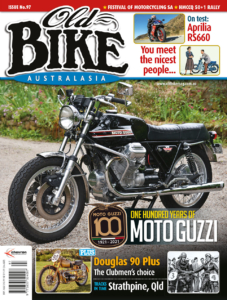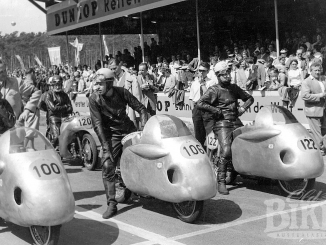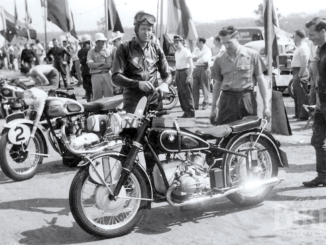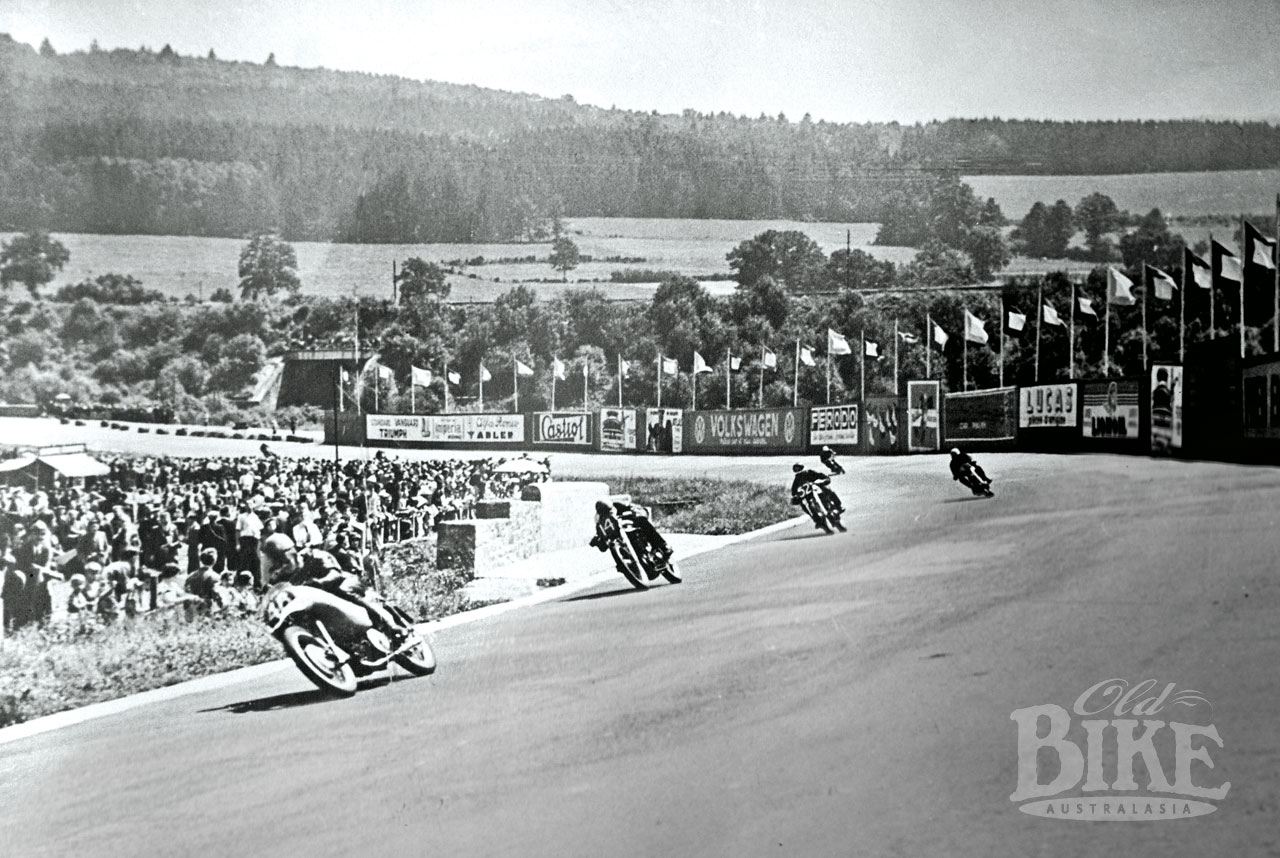
- Spa-Francorchamps Circuit Museum
From our Old Bike Archives – Issue 97 – first published in 2021.
Story and photos: Jim Scaysbrook
Spa-Francorchamps Museum, Belgium.
Prior to 1981, when the famous Spa-Francorchamps race track was dramatically shortened, the lap passed within metres of the town of Stavelot; today a somewhat sleepy village where motor sport history is not overtly displayed.
Just up the road, the original and mightily spectacular Stavelot Corner, on the southern extremity of the original and very daunting 14-kilometre lap, spears off the main road and heads uphill towards the fearful Blanchimont Bend, which was flat out for the brave. The Stavelot curve was a slightly banked long right hander that was also taken flat out, drawing huge crowds on the inside of the bend, which was in the day lined with tall billboards and the flags of many nations on the outside. Today, that stretch of road is still there, but the billboards and flags have gone and what was the spectator area has returned to peaceful grazing land.
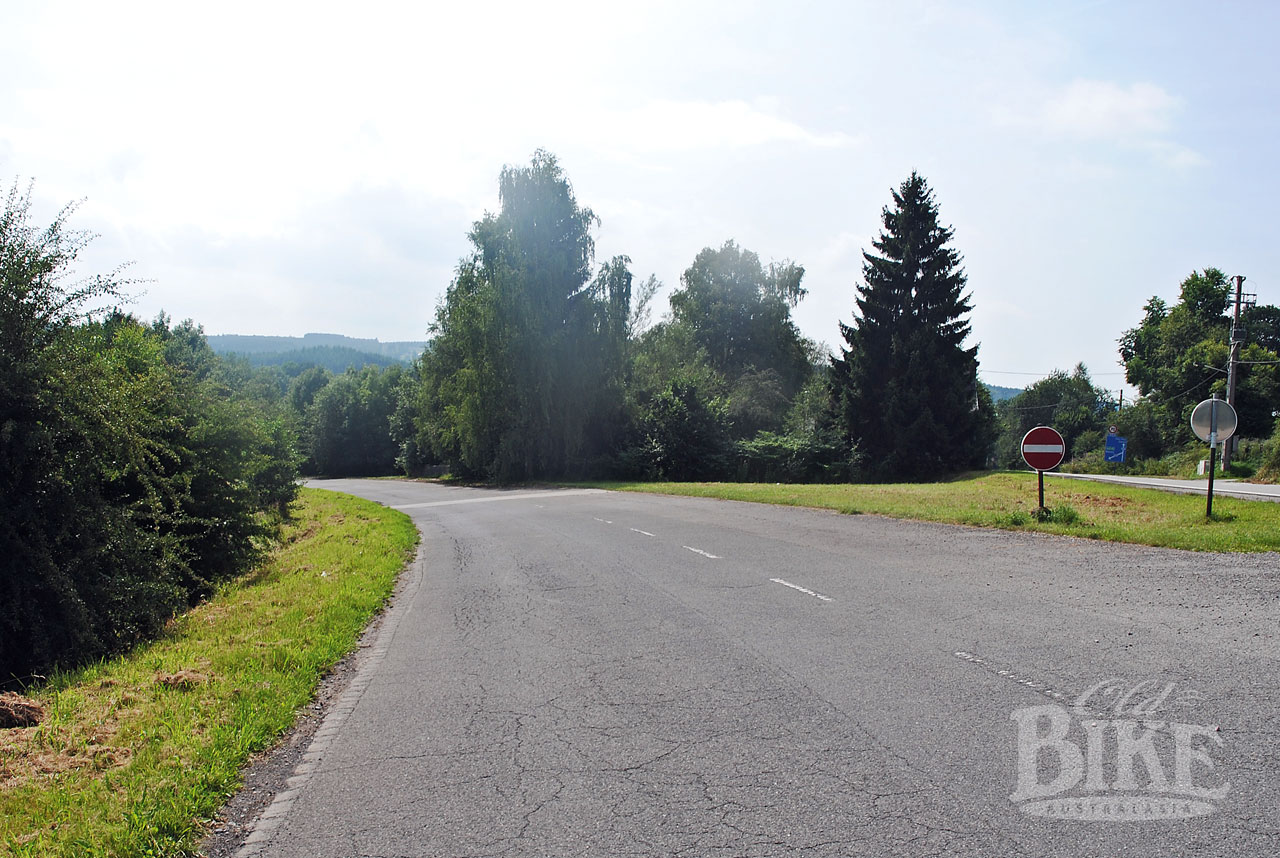
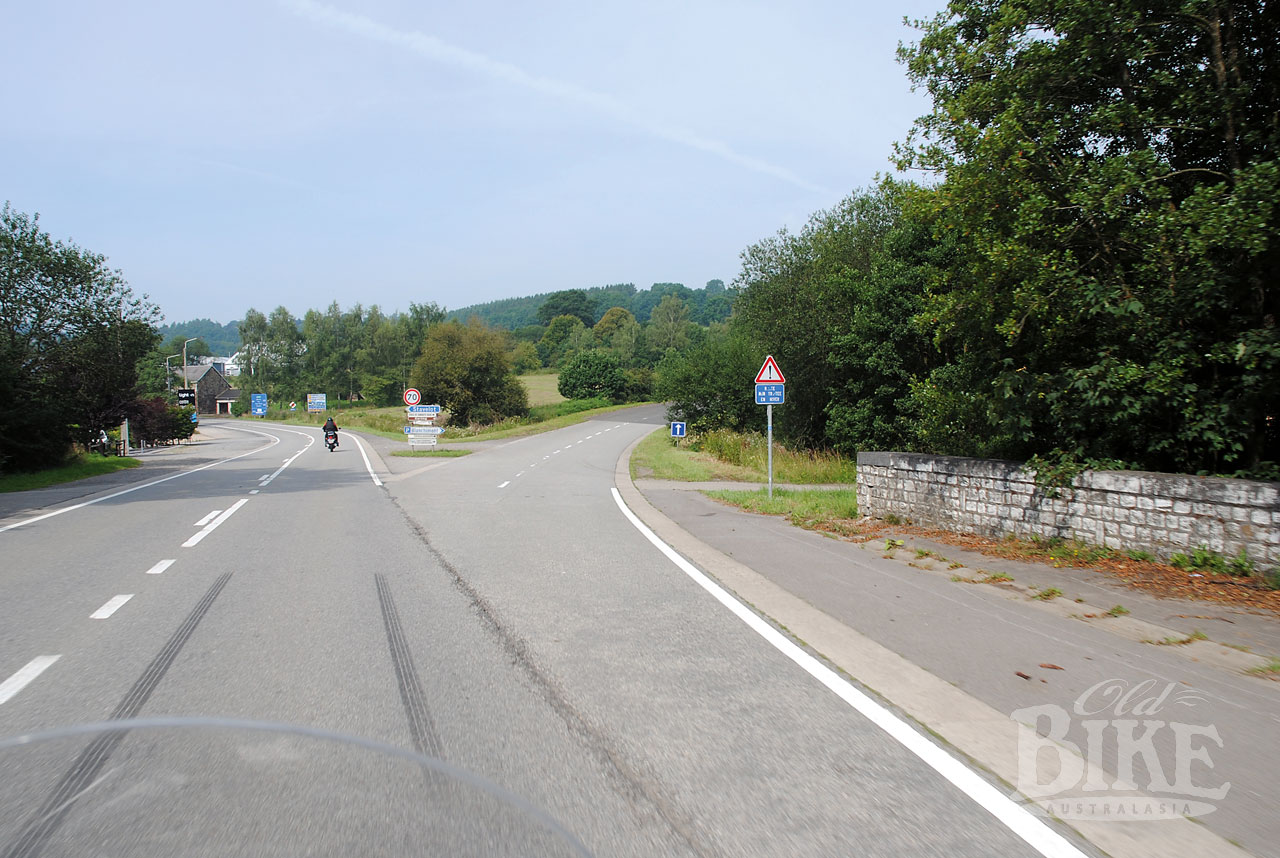
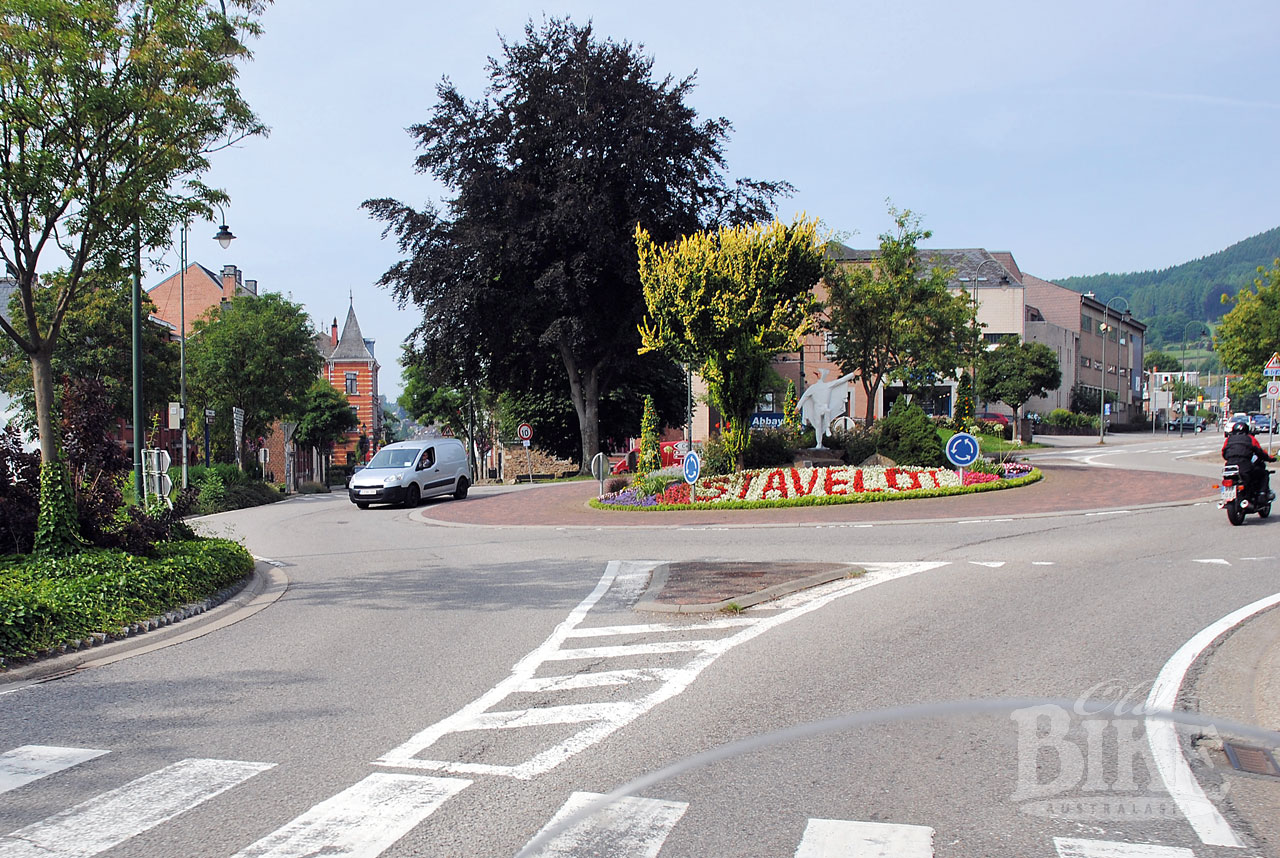
In the town of Stavelot itself stands the Abbey (https://abbayedestavelot.be/en/), one of two monasteries (the other in nearby Malmedy) that were founded in 650. Having withstood numerous invasions, annexations and occupations over the past millennium, Stavelot is back in Belgian hands, at least for the foreseeable future. The principle building dates from around 1040 and since 1984 has contained the Spa-Francorchamps Circuit Museum, located in the magnificent vaulted cellars.
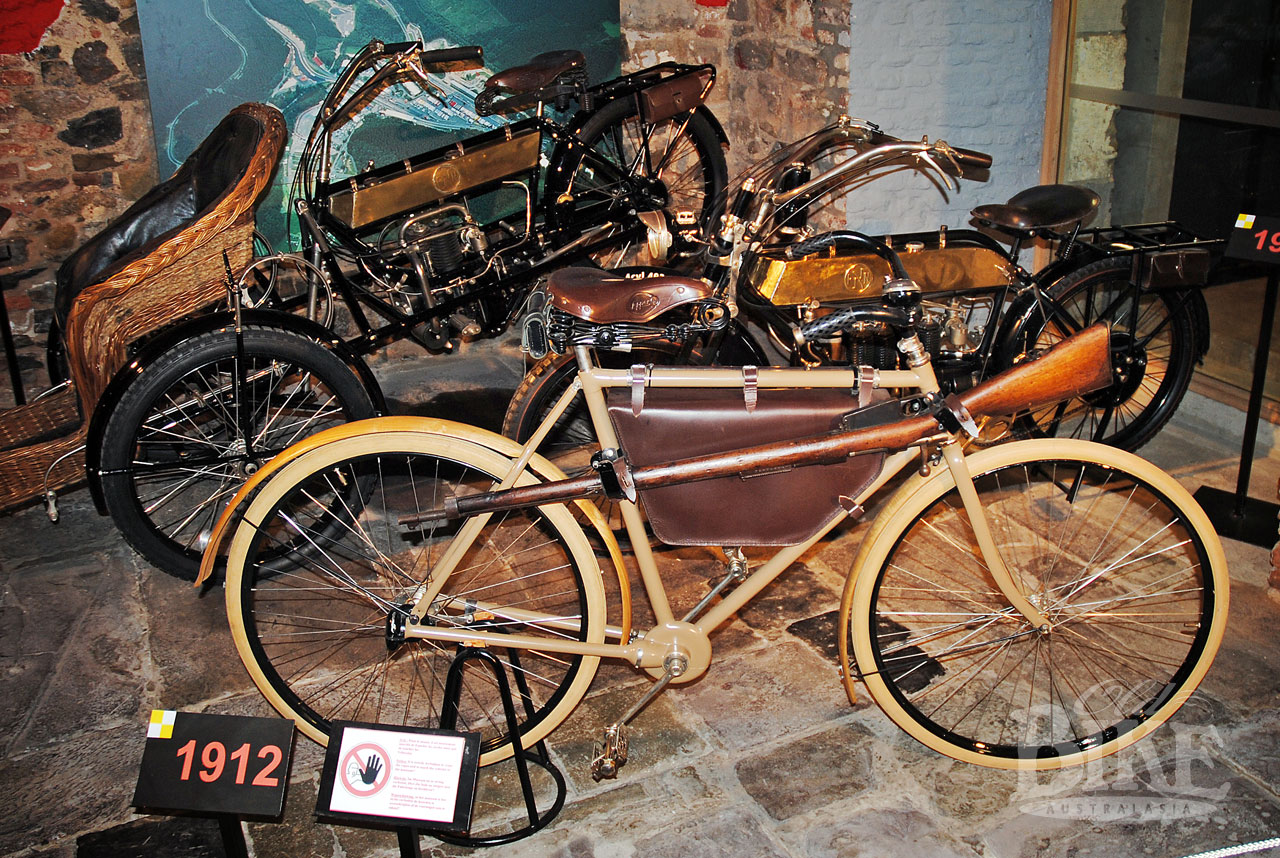

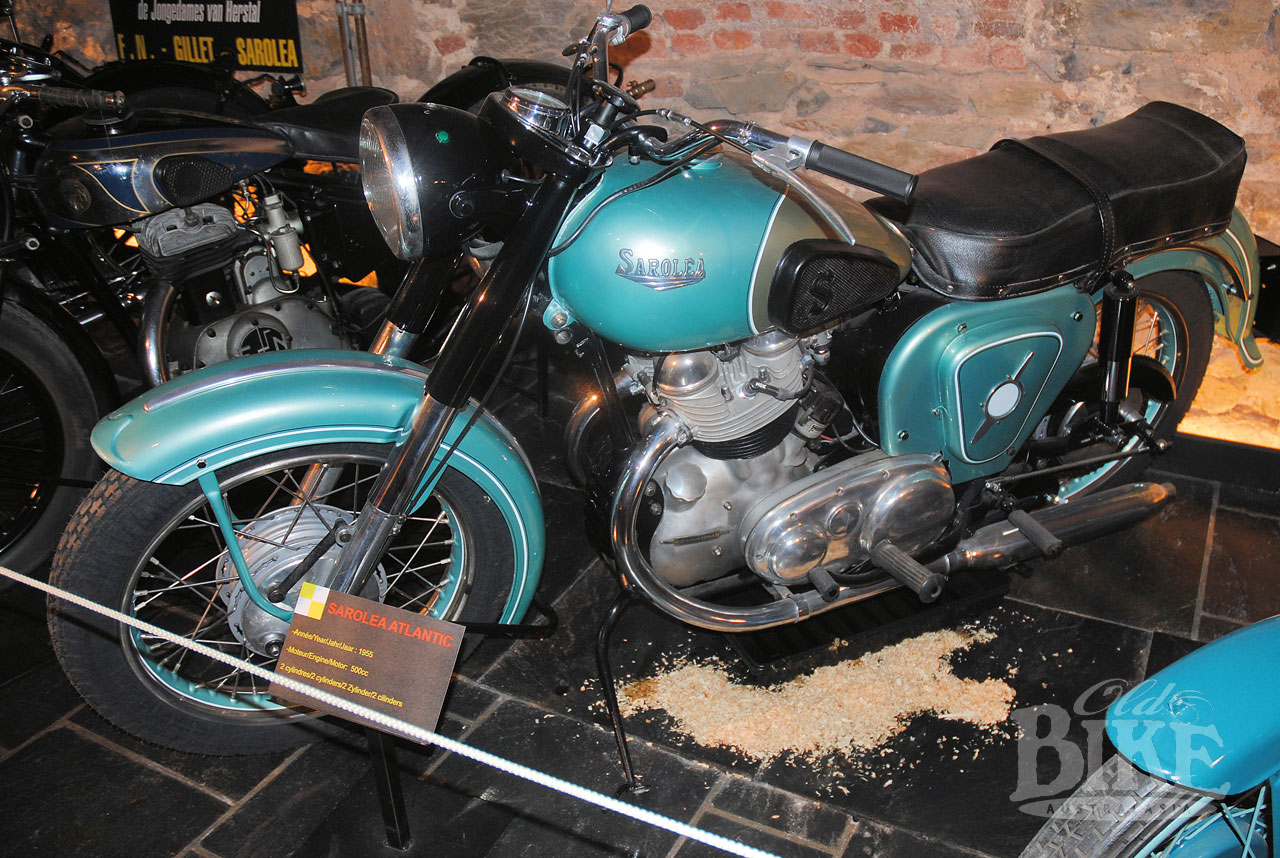
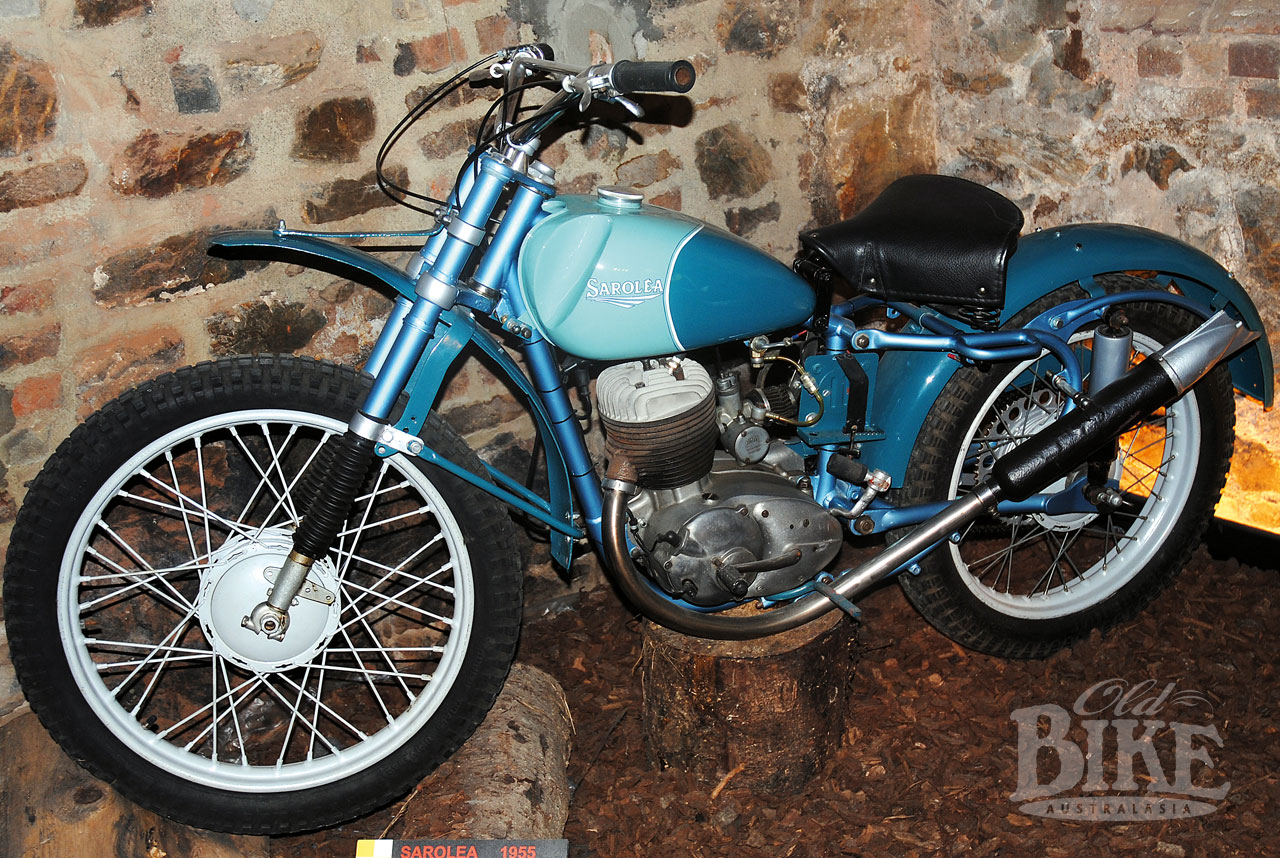
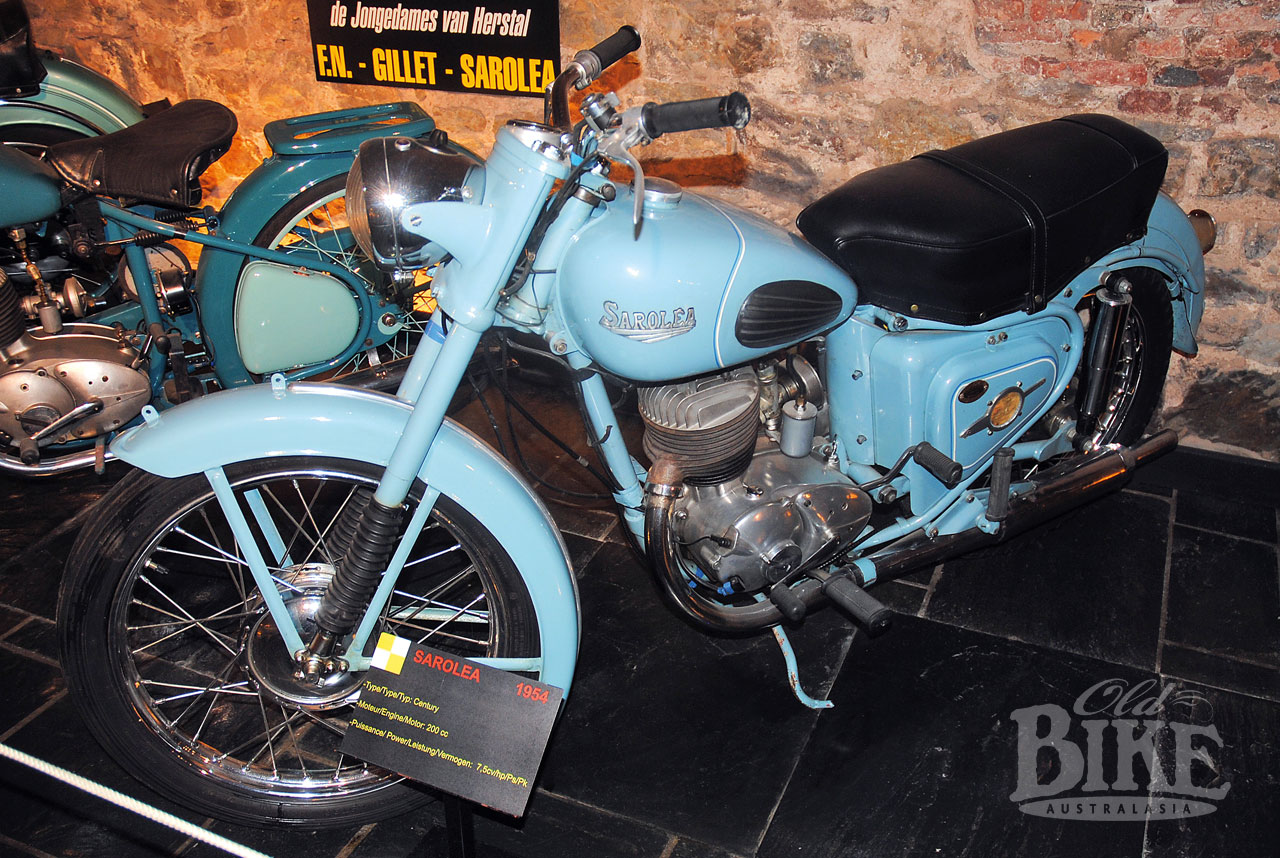
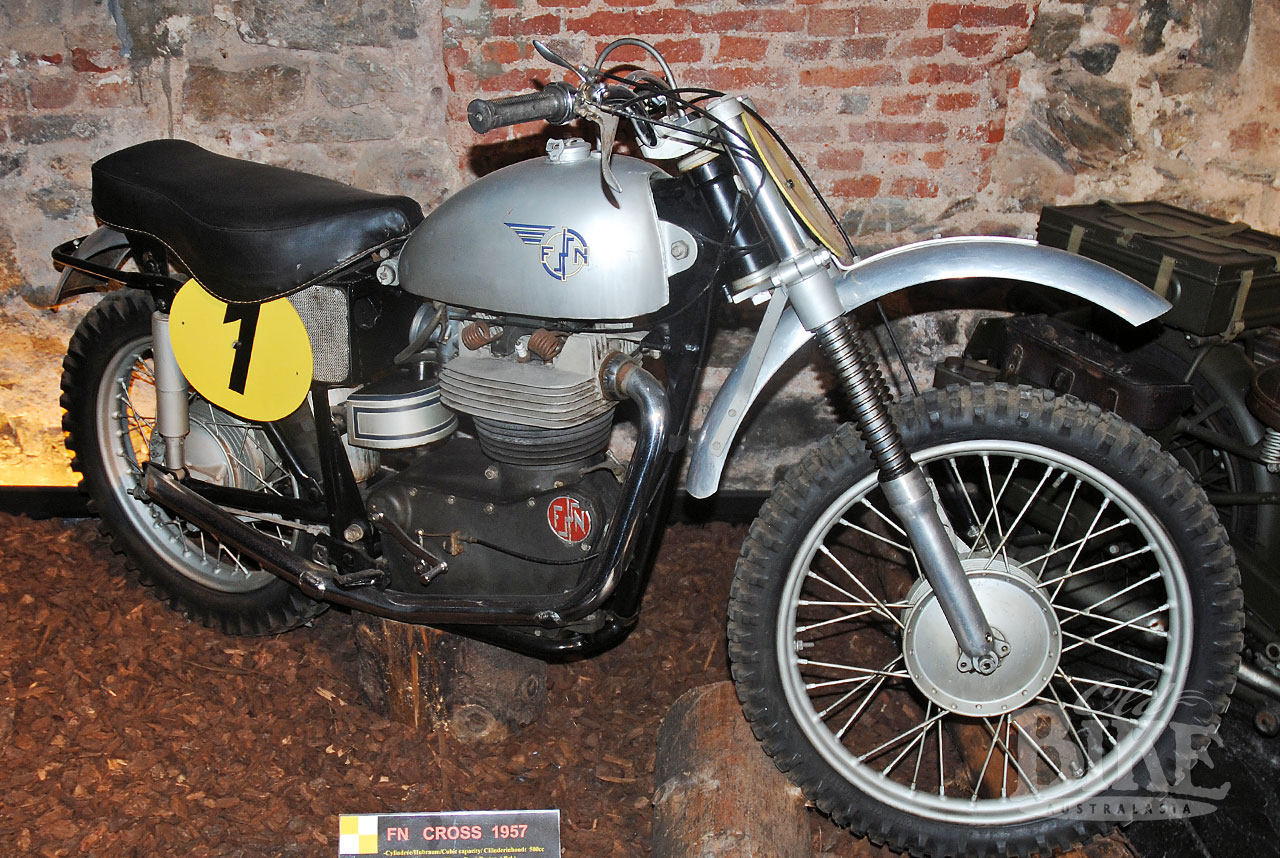
It is a particularly apt environment for a museum, with stone walls decorated with period signage and advertising. Naturally the museum collection is slanted more towards cars, but there is nevertheless an extensive motorcycle display which contains examples of the local manufacturers, FN, Gillet and Sarolea, which were made in nearby Liege. In the late 1950s when the motorcycle industry was struggling, these three companies amalgamated.
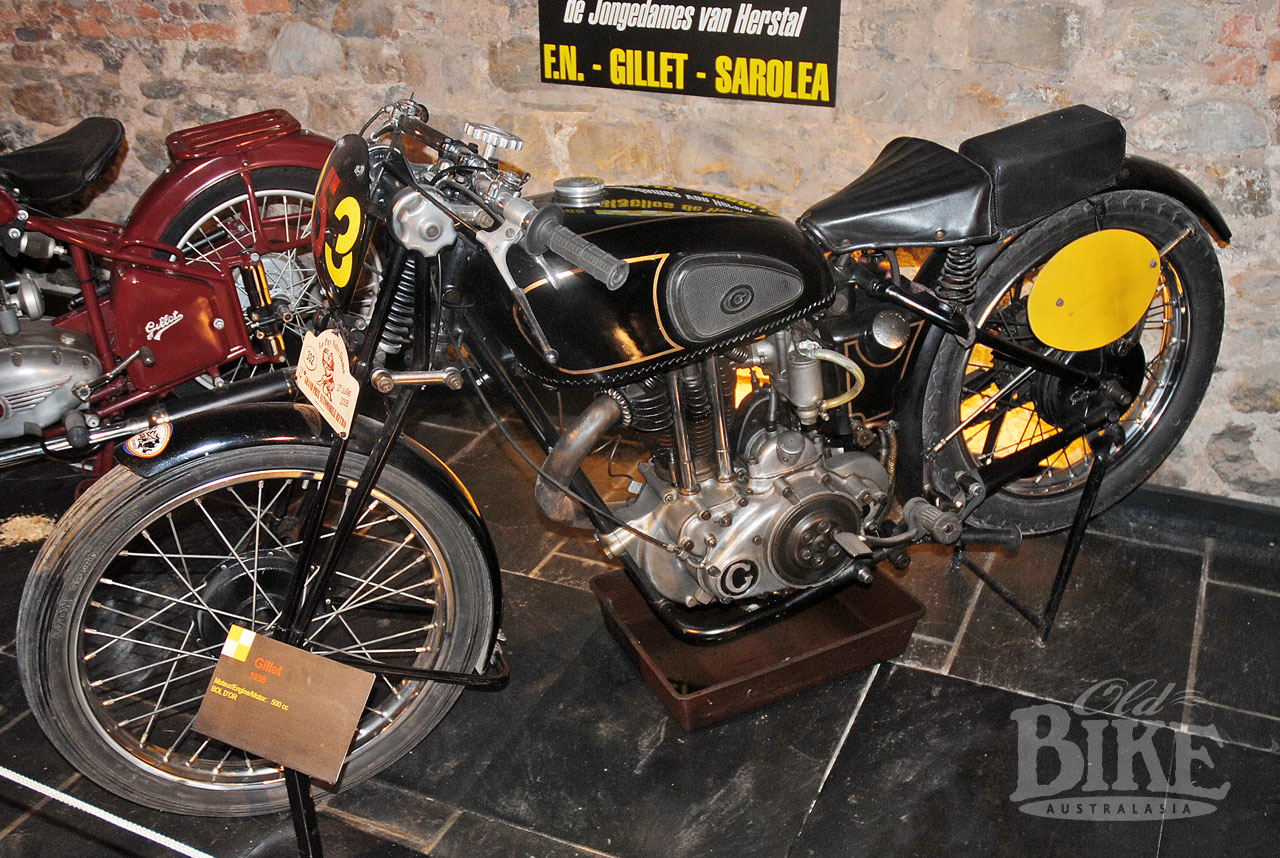
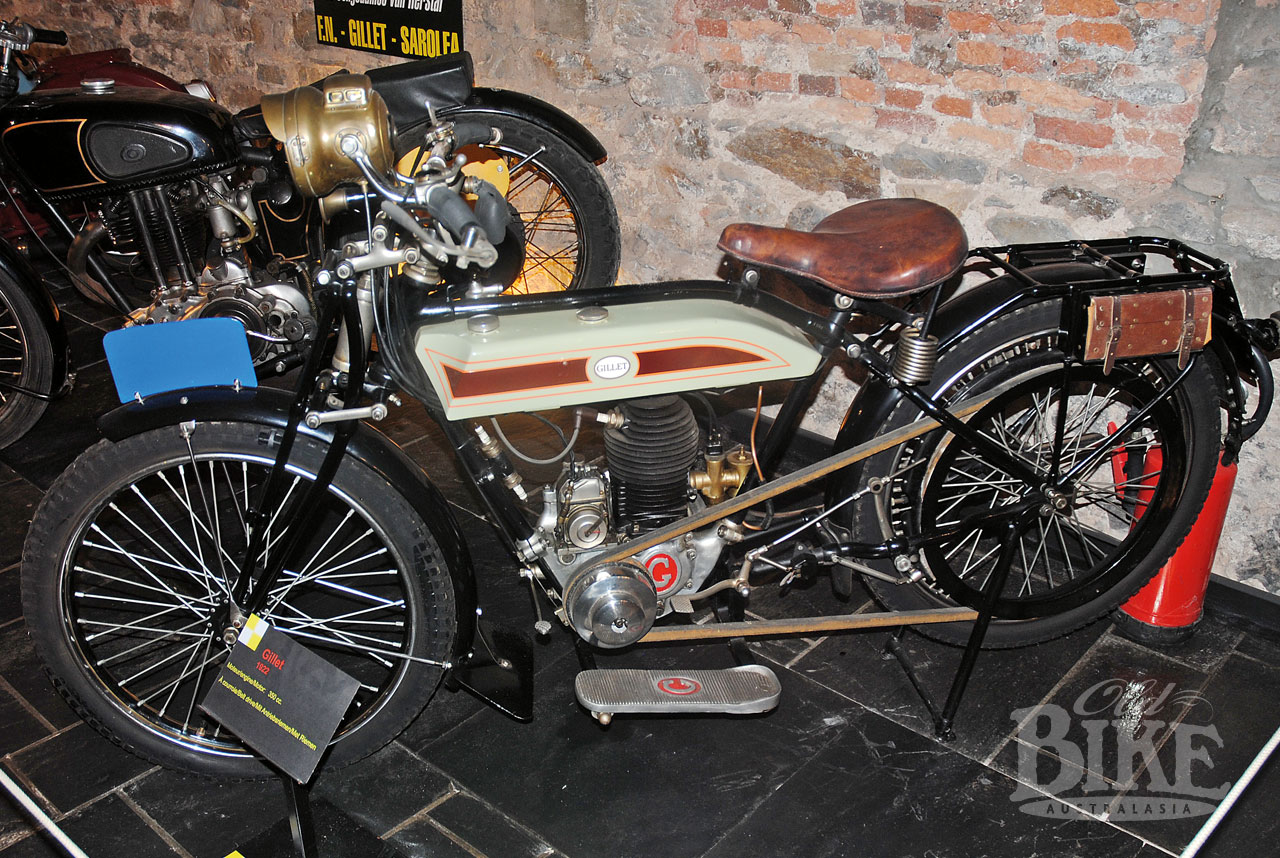
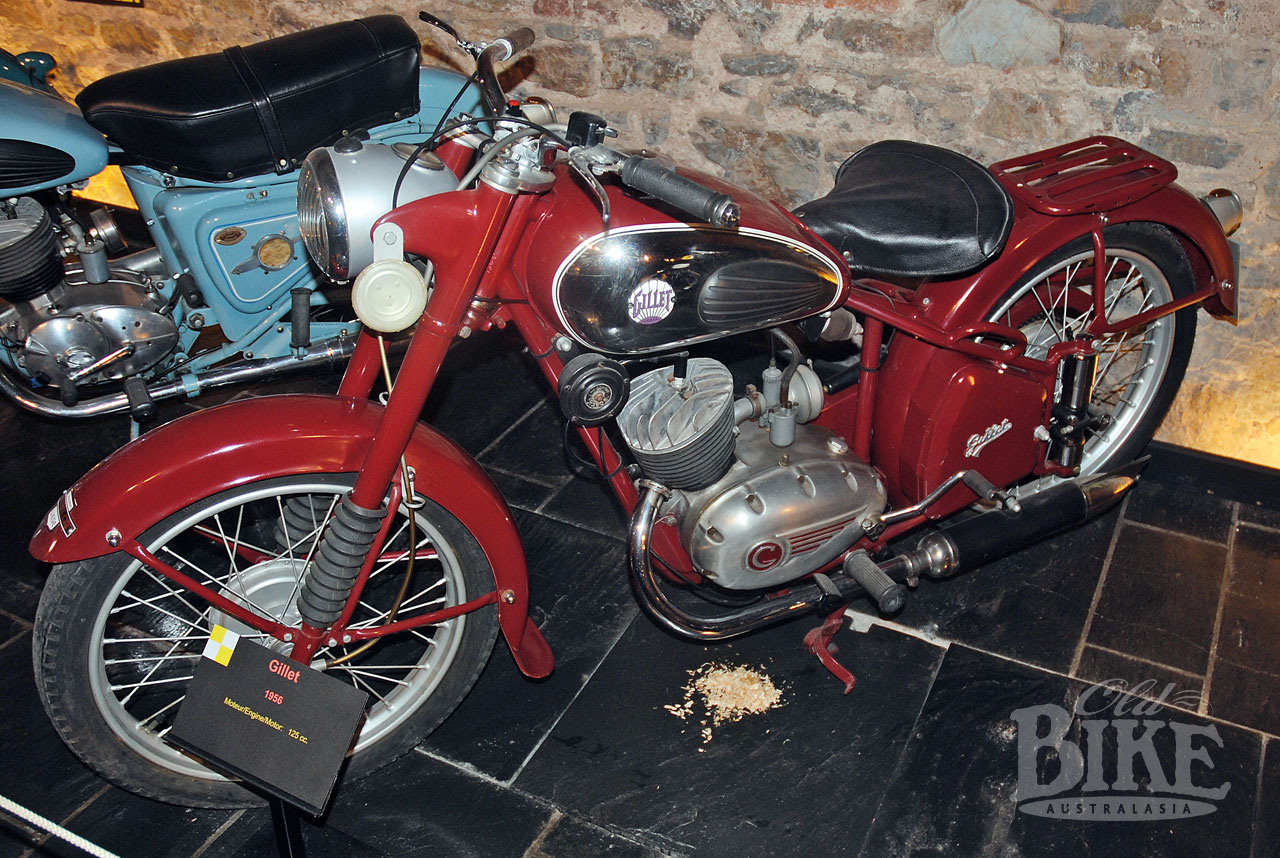
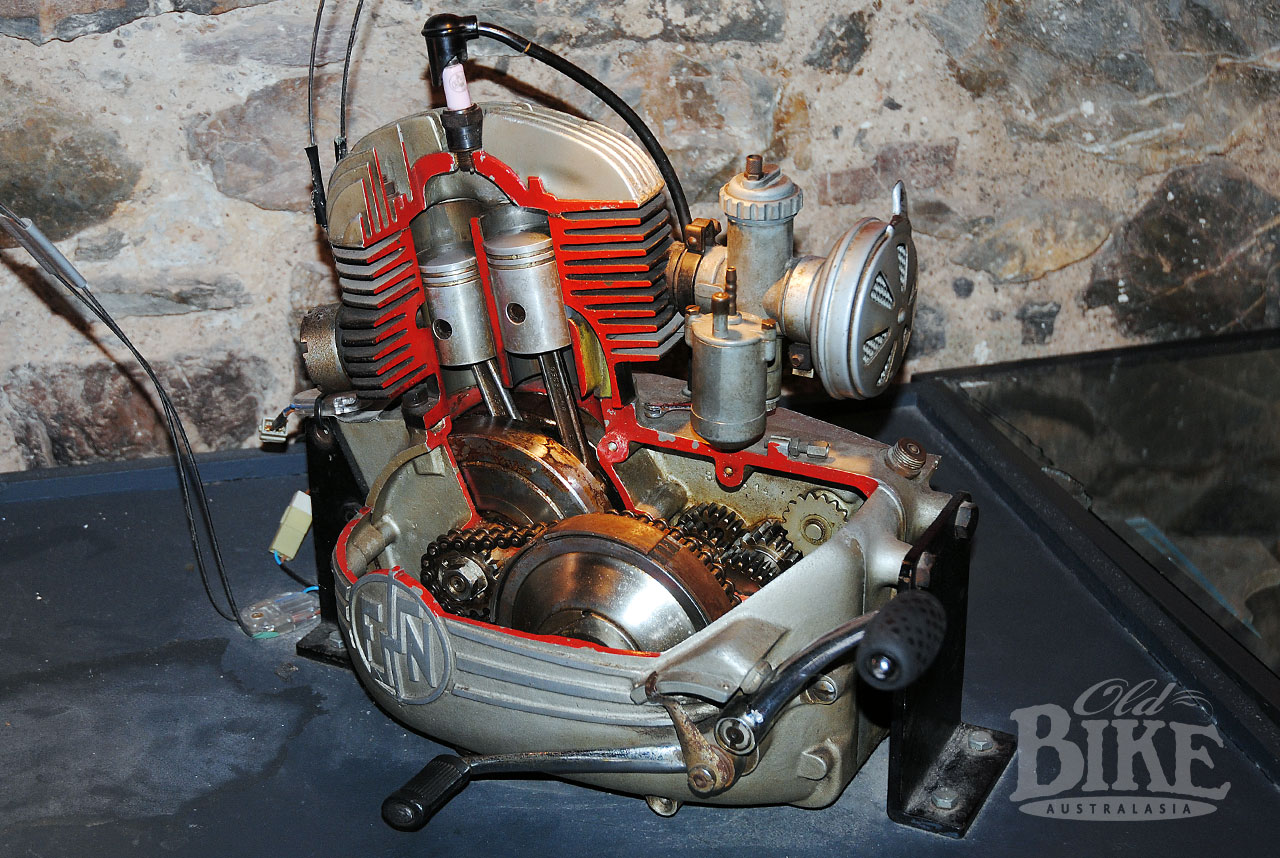
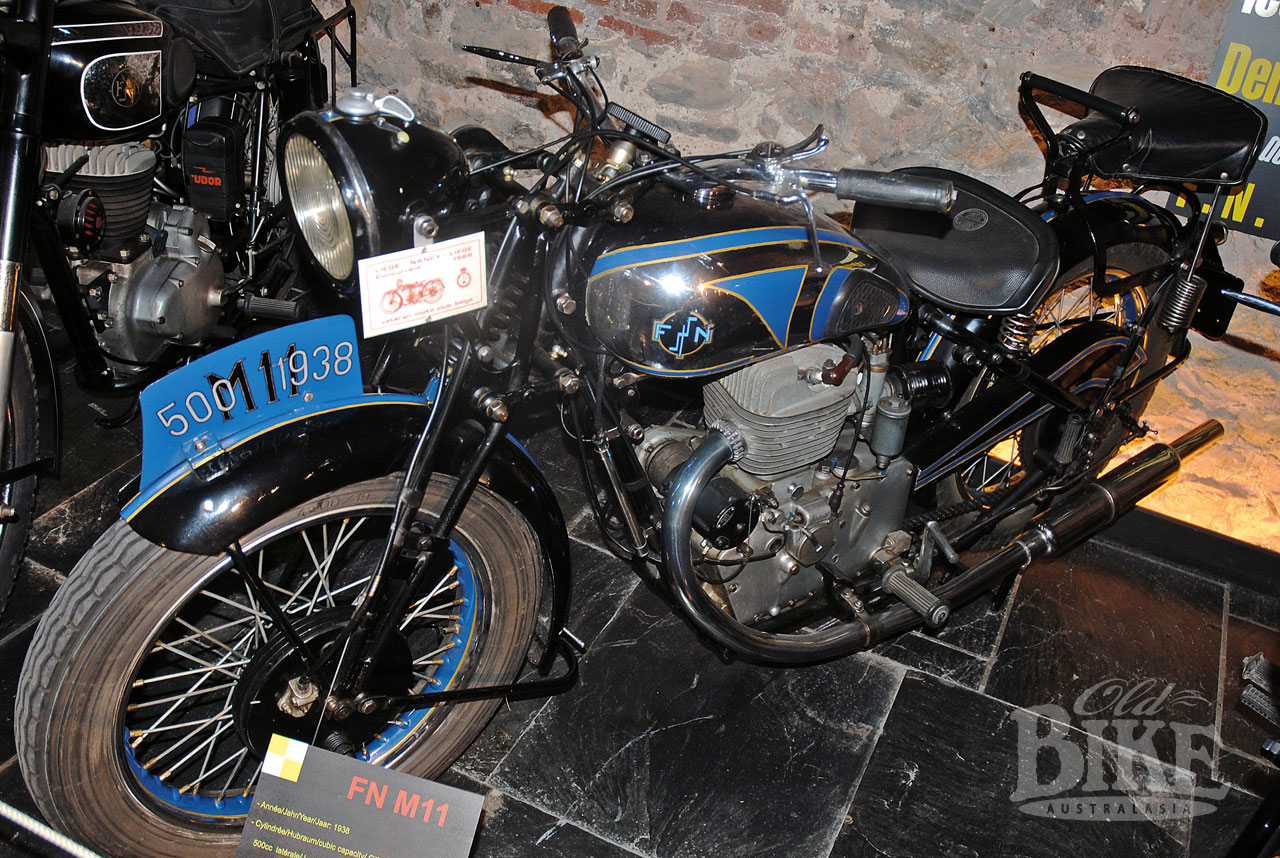
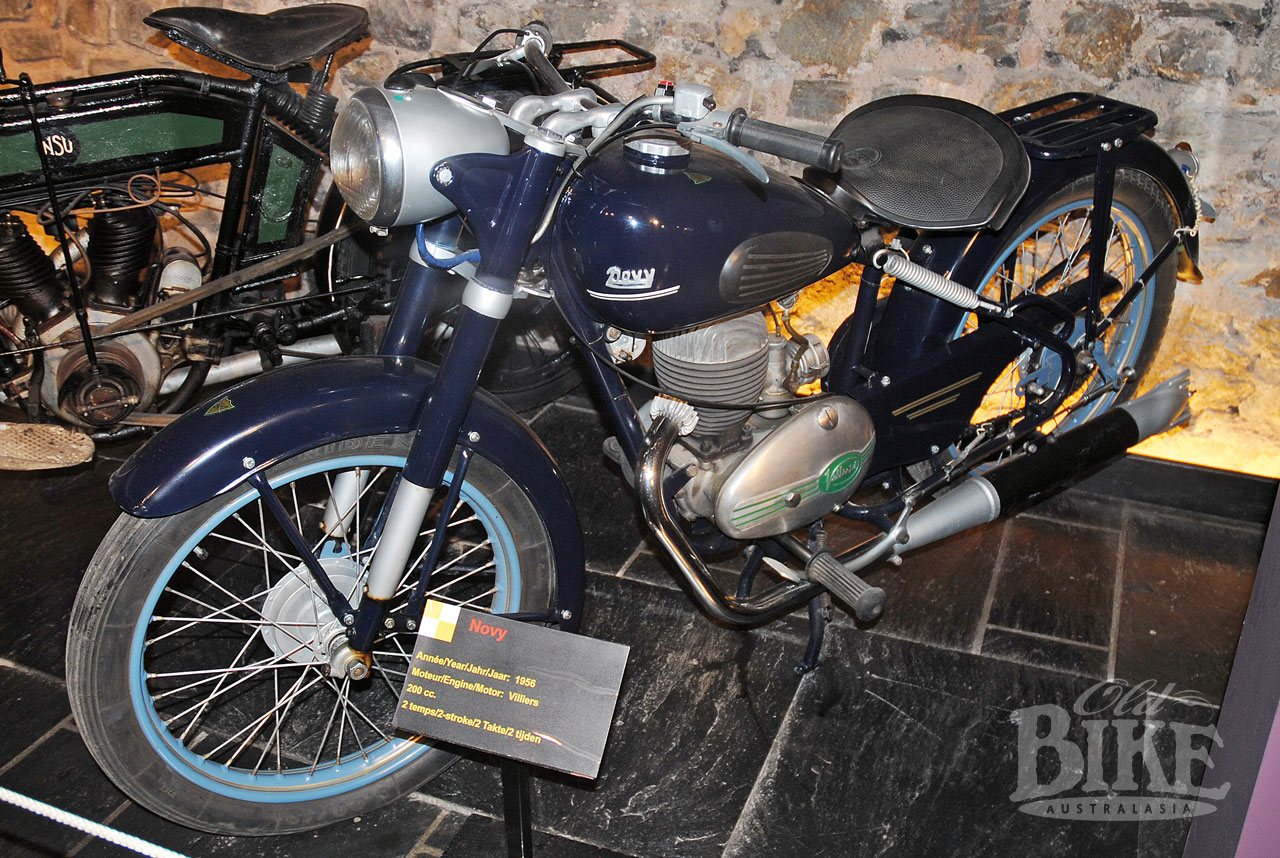
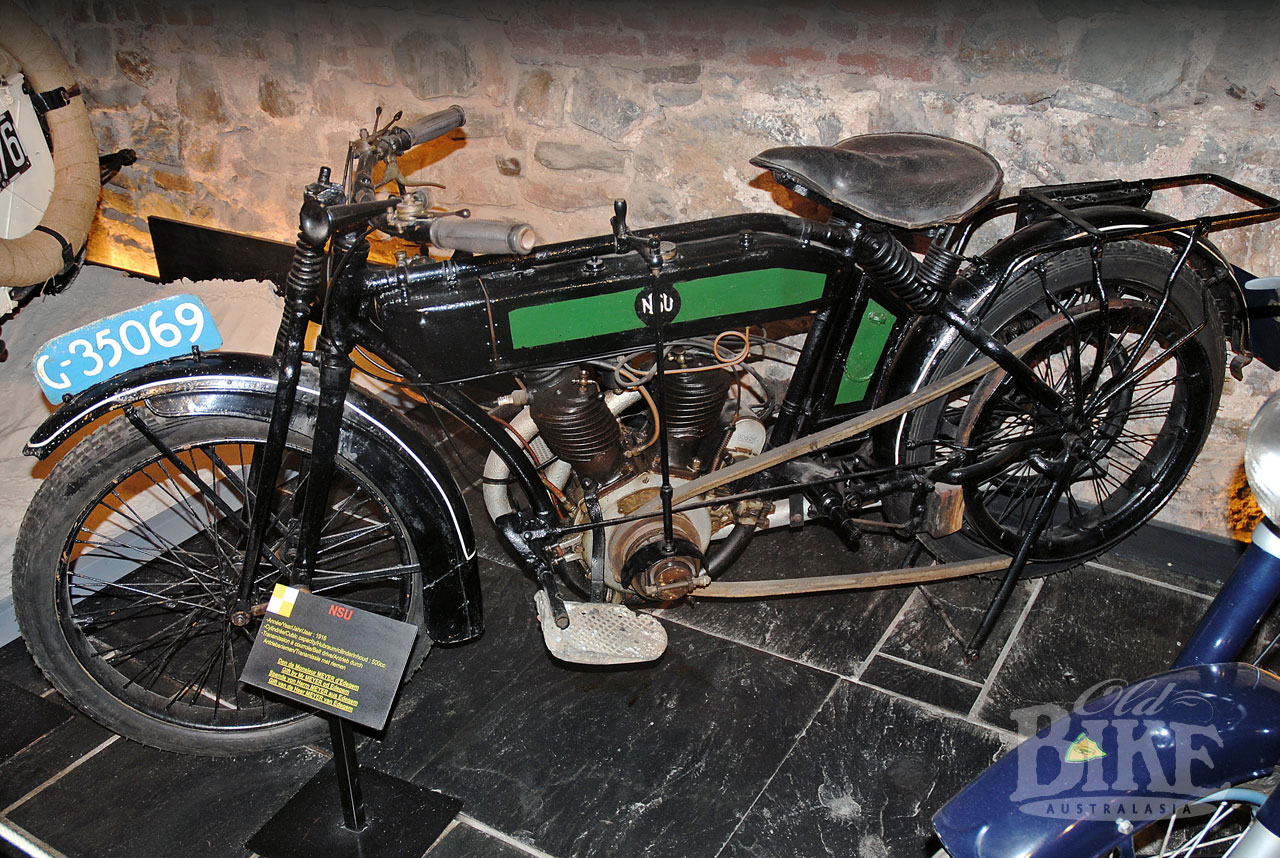
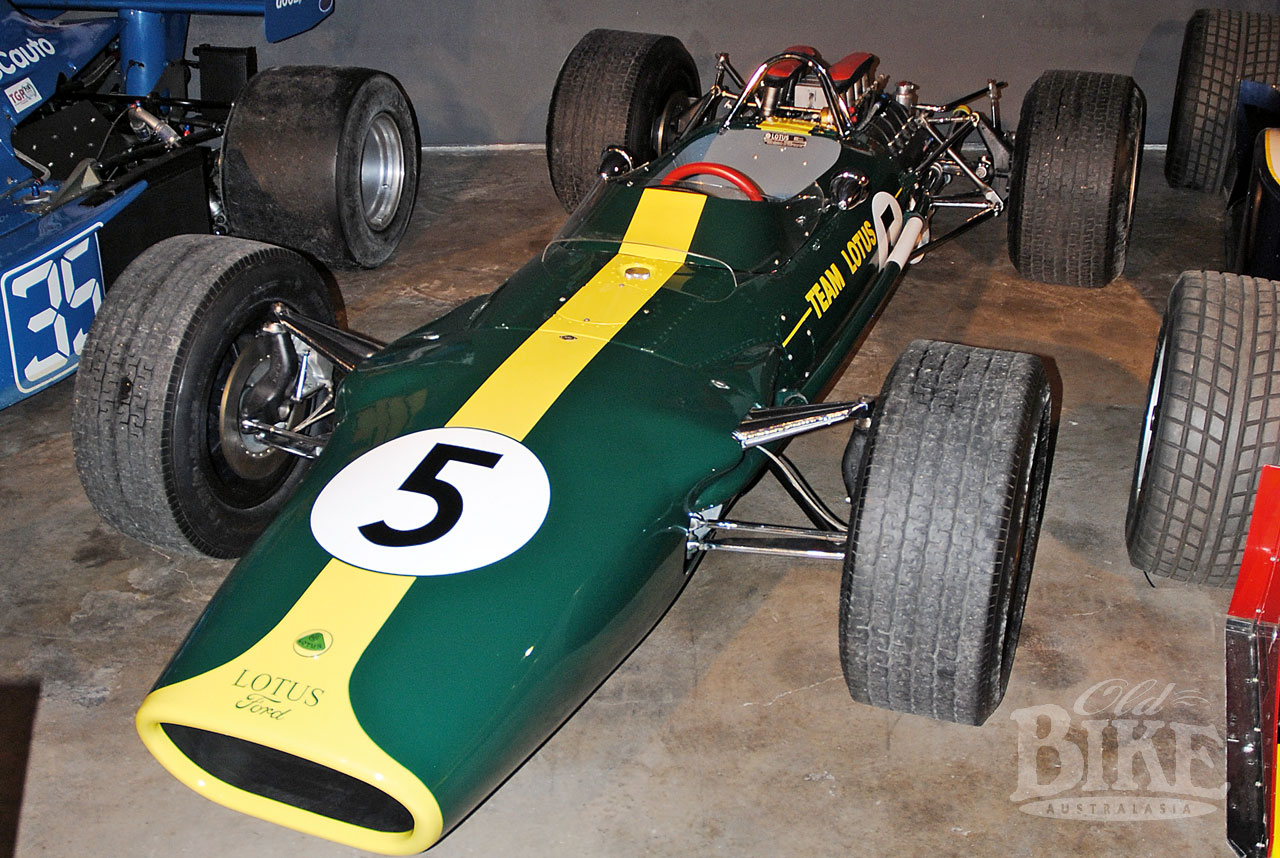
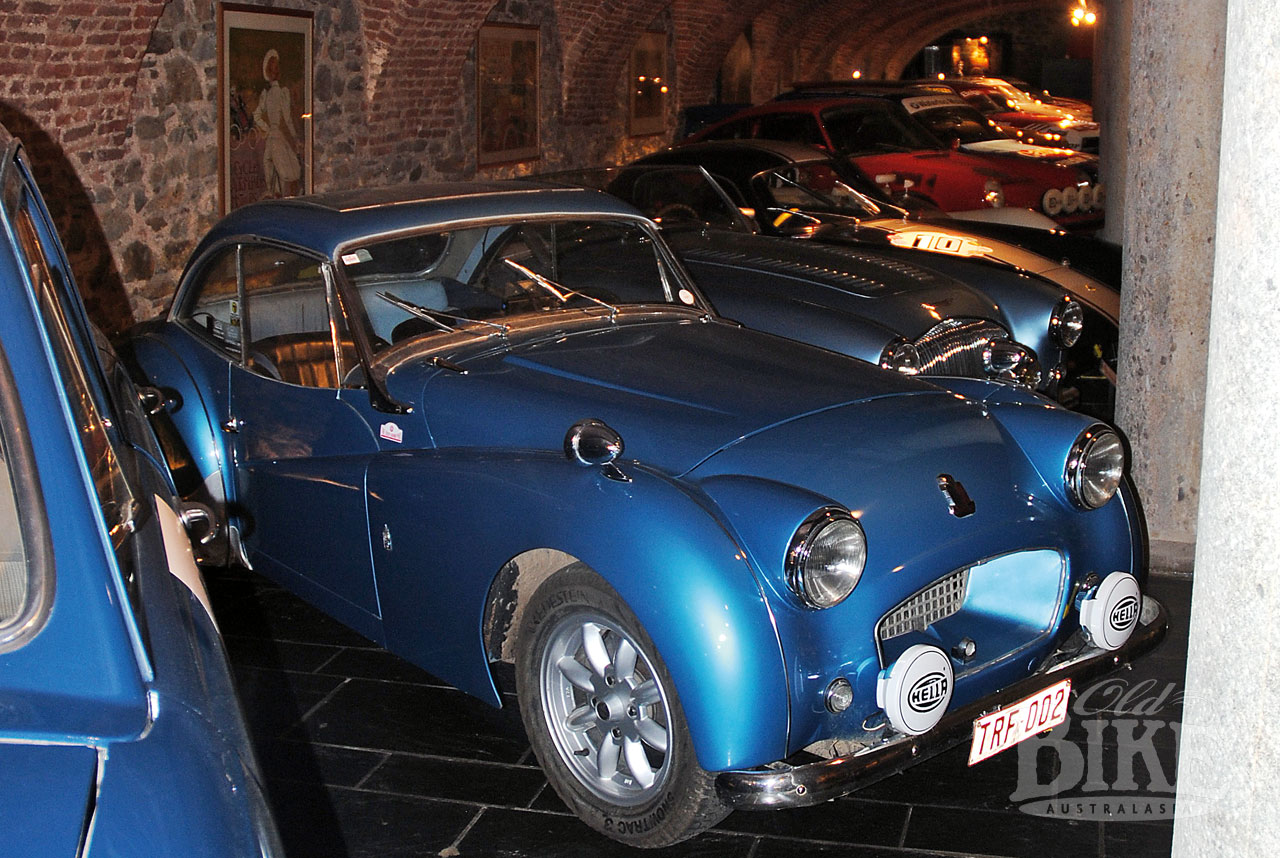
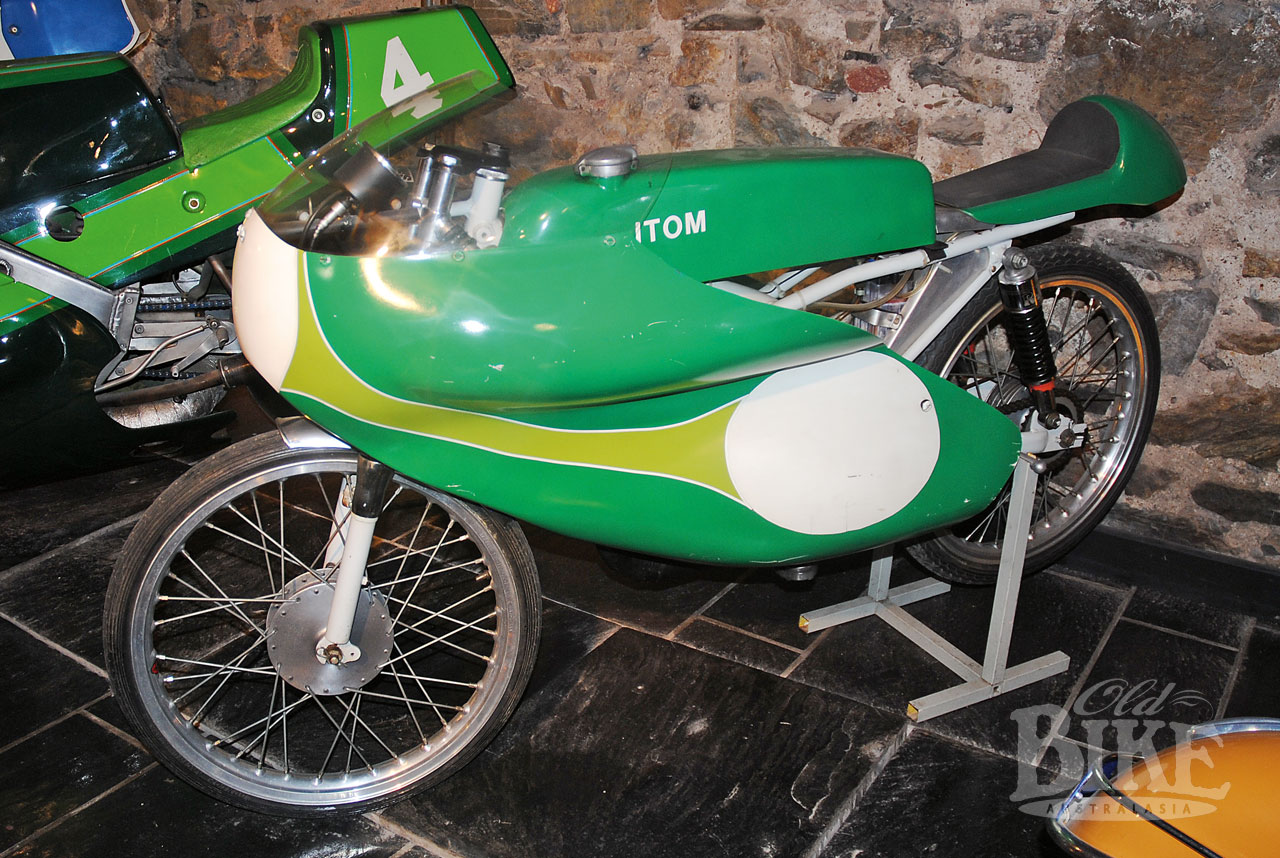
Since my visit, the motorcycle display has been bolstered by the addition of bikes that have featured in the annual Spa 24 Hour Endurance Race, part of the Endurance World Championship. The museum is open to the public. Visit the museum website for more information including opening times: https://musee-circuit.be/en/
